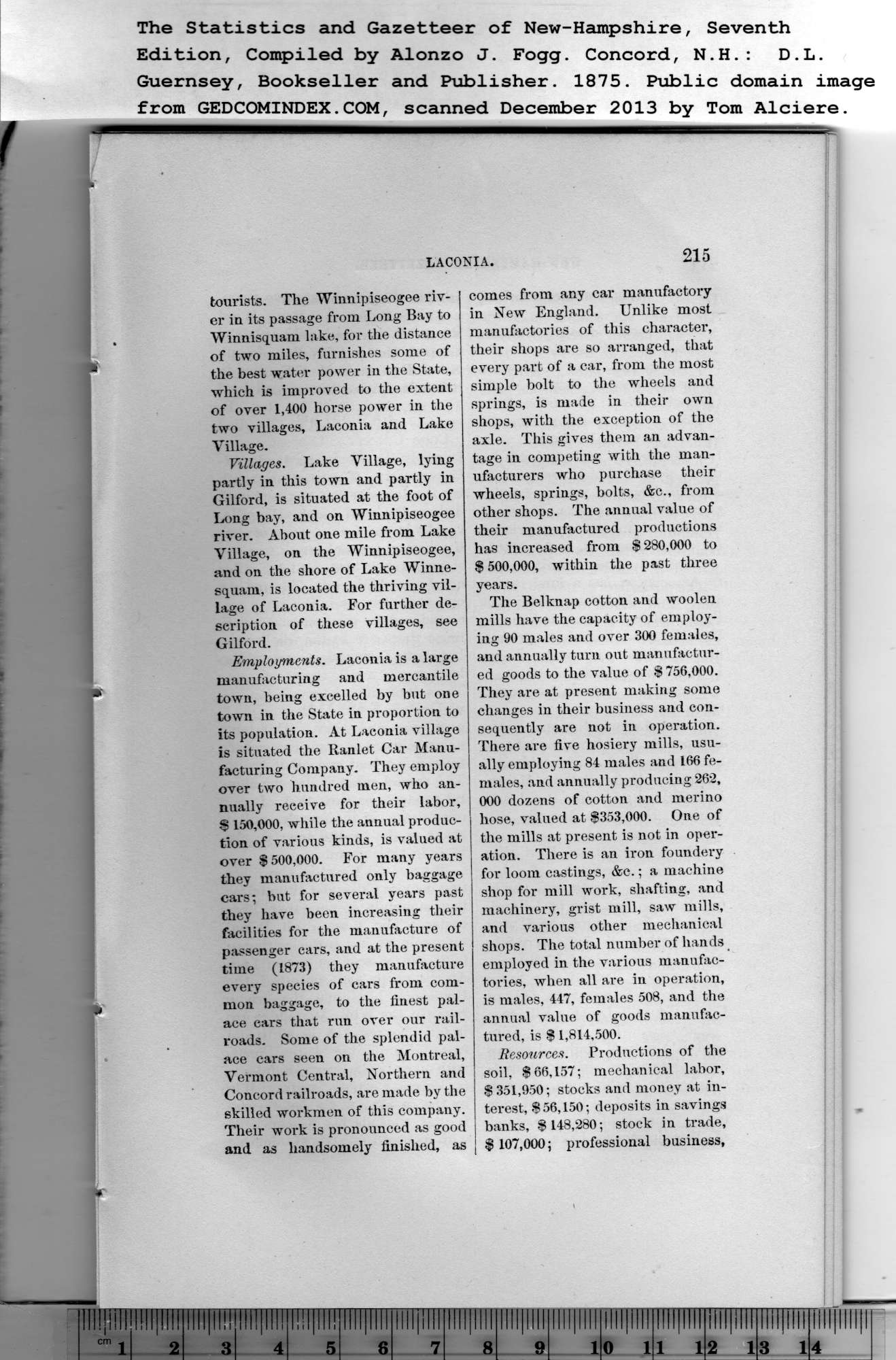|
tourists. The Winnipiseogee riv-
er in its passage from Long Bay to
Winnisquam lake, for the distance
of two miles, furnishes some of
the best water power in the State,
which is improved to the extent
of over 1,400 horse power in the
two villages, Laconia and Lake
Village.
Villages. Lake Village, lying
partly in this town and partly in
Gilford, is situated at the foot of
Long bay, and on Winnipiseogee
river. About one mile from Lake
Village, on the Winnipiseogee,
and on the shore of Lake Winne-
squam, is located the thriving vil-
lage of Laconia. For further de-
scription of these villages, see
Gilford.
Employments. Laconia is a large
manufacturing and mercantile
town, being excelled by but one
town in the State in proportion to
its population. At Laconia village
is situated the Ranlet Car Manu-
facturing Company. They employ
over two hundred men, who an-
nually receive for their labor,
$ 150,000, while the annual produc-
tion of various kinds, is valued at
over $500,000. For many years
they manufactured only baggage
cars; but for several years past
they have been increasing their
facilities for the manufacture of
passenger cars, and at the present
time (1873) they manufacture
every species of cars from com-
mon baggage, to the finest pal-
ace ears that run over our rail-
roads. Some of the splendid pal-
ace cars seen on the Montreal,
Vermont Central, Northern and
Concord railroads, are made by the
skilled workmen of this company.
Their work is pronounced as good
and as handsomely finished, as
comes from any car manufactory
in New England. Unlike most
manufactories of this character,
their shops are so arranged, that
every part of a car, from the most
simple bolt to the wheels and
springs, is made in their own
shops, with the exception of the
axle. This gives them an advan-
tage in competing with the man-
ufacturers who purchase their
wheels, springs, bolts, &c., from
other shops. The annual value of
their manufactured productions
has increased from $280,000 to
$ 500,000, within the past three
years.
|
The Belknap cotton and woolen
mills have the capacity of employ-
ing 90 males and over 300 females,
and annually turn out manufactur-
ed goods to the value of $ 756,000.
They are at present making some
changes in their business and con-
sequently are not in operation.
There are five hosiery mills, usu-
ally employing 84 males and 166 fe-
males, and annually producing 262,
000 dozens of cotton and merino
hose, valued at $353,000. One of
the mills at present is not in oper-
ation. There is an iron foundery
for loom castings, &c.; a machine
shop for mill work, shafting, and
machinery, grist mill, saw mills,
and various other mechanical
shops. The total number of bands
employed in the various manufac-
tories, when all are in operation,
is males, 447, females 508, and the
annual value of goods manufac-
tured, is $ 1,814,500.
Resources. Productions of the
soil, $66,157; mechanical labor,
$351,950; stocks and money at in-
terest, $56,150; deposits in savings
banks, $148,280; stock in trade,
$ 107,000; professional business, |
